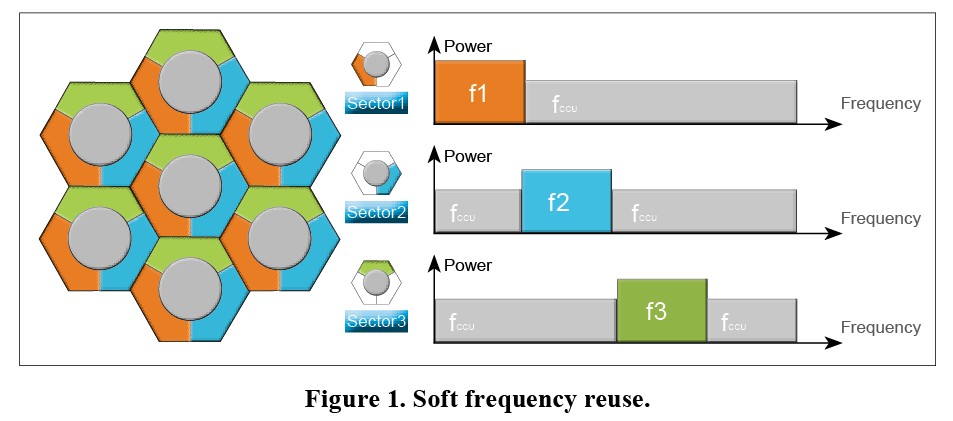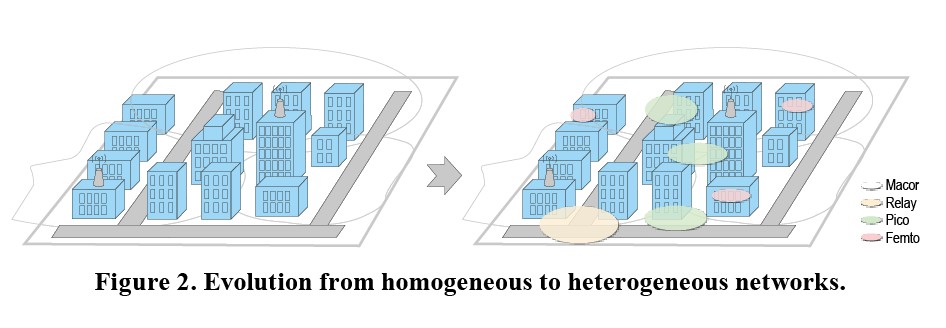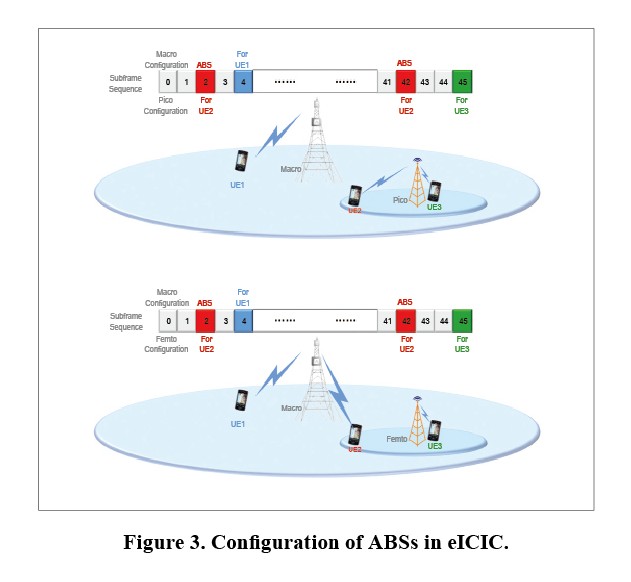Enhanced ICIC for LTE-A HetNet
LTE is one of the technologies of choice for 4G mobile communications. So far, it has been deployed by 248 operators in 87 countries worldwide. 35 LTE networks have been put into commercial operation. In LTE networking, technologies such as intercell interference coordination (ICIC), have been verified both theoretically and practically. With ongoing LTE network deployments and technological innovation, enhanced ICIC (eICIC) has been developed for a new heterogeneous network topology in LTE-Advanced.
Intra-frequency Interference in LTE
Orthogonal frequency division multiple access (OFDMA) used in LTE is a combination of orthogonal frequency-division multiplexing (OFDM) and time division multiple access (TDMA). OFDMA identifies different subscribers in the same cell by different time and subcarriers. To maximize spectrum efficiency, intra-frequency networking is often used in LTE. Intra-frequency networking means that each neighboring cell uses the same carrier. Different subscribers in the neighboring cells, especially those at the cell edge, may receive two or more signals of the same frequency at the same time. If these co-frequency signals from various cells are very strong, subscribers suffer severe interference and the quality of their communication is affected.
Introduction of ICIC
ICIC was introduced in 3GPP Release 8 to solve intercell intra-frequency interference. The main idea of ICIC is to divide each cell into cell center and cell edge and then allocate different subcarriers to subscribers in different locations. Theoretically, it is impossible for subscribers at the edge of two neighboring cells to use the same frequency, and the possibility of interference between two neighboring cells is reduced.
ICIC can be classified in several ways. Depending on the period of resource scheduling, ICIC can be static, semi-static, or dynamic. It can also be classified into fractional frequency reuse, soft frequency reuse, and full frequency reuse according to the type of resource scheduling.
Semi-static soft frequency reuse can maximize spectrum efficiency in a less complex system. As shown in Fig.1, different subcarriers are allocated to the edge of neighboring cells, and the subcarriers are reused in the cell centre. The power is controlled to prevent cell edges and neighboring cells from being affected.

Development of Network Topology
With the expansion of LTE networks and rapid development of LTE technologies, new network topologies have emerged, and ICIC has also been enhanced.
LTE networks are tailored for high-speed high-throughput user groups. With growing numbers of subscribers and demand for bandwidth, traditional macro base stations can barely meet subscriber requirements. Especially in some hotspots, simple macro coverage is not sufficient for meeting traffic requirements. Such homogenous coverage inevitably causes blind spots that can impact user experience.
With the introduction of picocells, femtocells, and relay nodes, LTE network topology becomes more flexible and can handle blind spots. This network topology is defined as heterogeneous network (HetNet) in 3GPP Release 10. In a HetNet, low power nodes (LPNs), such as RRUs/RRHs, pico eNodeBs, home eNodeBs, and relay nodes, are deployed in the macro coverage cell.
Network construction starts with macrocells in order to expand coverage; then LPNs are added to increase network capacity, eliminate blind spots, enhance indoor coverage, and improve user experience.
To further expand pico coverage and carry more user traffic, researchers have proposed cell range expansion (CRE) that allows user equipment (UE) to be served by a cell with weaker receiving power. In this way, picocells share more network load, and their coverage is extended.

Introduction of eICIC
Employing HetNet topology for LTE is a big challenge because LTE requires intra-frequency networking. The deployment of LPNs means more cells with intra-frequency interference are introduced. In particular, coverage overlaps between LPNs and macrocells in a HetNet, and intercell interference is difficult to control. CRE allows subscribers to access cells with weak receiving power. Low signal power and enhanced downlink interference lead to a lower signal to interference plus noise ratio (SINR). As a result, both service channels and control channels are greatly affected.
There are two main interference scenarios that need to be considered:
Macro-pico scenario: In areas covered by macrocells, subscribers with access to picocells are vulnerable to macro-pico interference. Their communication quality is affected. In particular, when CRE is used and subscribers (often at the edge of picocells) access the picocells with low receiving power, macrocells strongly interfere with them.
Macro-femto scenario: Femtocells belong to a closed subscriber group (CSG) where access and services are restricted to authorized subscribers. When macrocell subscribers enter areas covered by femtocells, femtocells strongly interfere with them.
To suppress intra-frequency interference in a HetNet and improve system capacity and user experience, eICIC is introduced in LTE-Advanced (3GPP Release 10).
The principle of ICIC is to divide the overlapping area of neighboring cells into different frequency bands in order to reduce intercell interference. This method no longer works in a HetNet. eICIC redefines an additional time dimension, which allows signals in different cells to be orthogonal in the time domain. Compared with ICIC, eICIC can reduce intercell interference not only on traffic channels but also on control channels. In other words, ICIC coordinates intercell interference on traffic channels in the frequency and power domains, and eICIC coordinates intercell interference on traffic and control channels in both the frequency, time and power domains also. eICIC in 3GPP Release 10 only deals with non-carrier aggregation and will be fully compatible with ICIC in 3GPP Release 8/9.
The concept of an almost blank subframe (ABS) is introduced in time domain eICIC to coordinate intercell interference in the time domain. ABS only contains some necessary signals with low power, such as PSS/SSS, PBCH, CRS, Paging, and SIB1, for compatibility with UE in 3GPP Release 8/9. eICIC configures ABSs in the interfering cell. These ABSs are used by the interfered cell to provide service for its subscribers who previously experienced strong interference. In this way, intercell interference is well coordinated.
For the two main interference scenarios in HetNet, ABSs are configured as in Fig. 3. In a macro-pico scenario, the corresponding subframes in a macrocell are configured as ABSs to prevent strong interference on UE2 that has access to a picocell. The picocell provides service for UE2 using these ABSs. In a macro-femto scenario, the corresponding subframes in a femtocell are configured as ABSs to prevent strong interference on a UE2 that has access to a macrocell. The macrocell provides service for UE2 using these ABSs.
The configuration of ABSs is transferred via the X2 interface or OAM. In general, a picocell transfers the configuration via the X2 interface, and a femtocell belonging to a CSG transfers the configuration manually via OAM.

As operators worldwide promote and deploy HetNet, it will be a trend in future network construction. However, HetNet cannot leverage its advantages unless the issue of intra-frequency interference is addressed. Analysis and simulation shows eICIC to be an effective solution to intra-frequency interference caused by HetNet. After a HetNet is deployed in conjunction with CRE and eICIC, coverage at the cell edge is significantly improved and subscribers have better experience (Fig. 4).
.jpg)
eICIC also provides optional solutions for multicarriers, carrier aggregation, asynchronization network, and multiple timeslot configurations in the same network. eICIC is especially important when using a multicarrier network to help operators leverage their spectrum advantages, protect their investments, and raise their revenue.